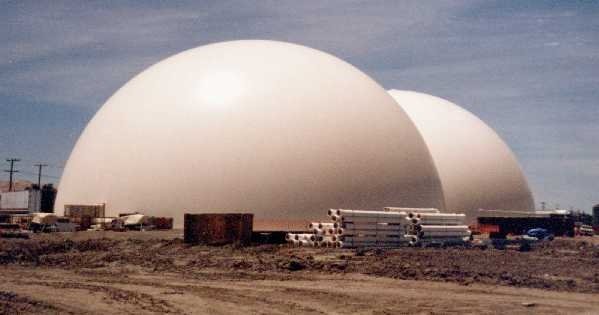Continuing from part 1 let’s discuss other essential details about shell structures.
Exploring Shell Structure Types: Cylindrical, Domes, and More
Shell structures manifest in various forms, each with distinct characteristics and applications. Let’s delve into some prominent types:
1. Cylindrical Shells
Cylindrical shells, characterized by their curved surfaces, are a fundamental type of shell structure. Examples include semi-ellipses, arch circles, cycloid catenaries, and horseshoe forms. These shells find applications in industrial structures, auditoriums, and architectural marvels.

2. Domes
Domes are iconic shell structures covering circular or square areas. The structural efficiency of domes lies in their double curvature, providing stability and strength. They are prevalent in religious buildings, civic structures, and modern architectural masterpieces.

3. Barrel Shells and Barrel Vaults
Barrel shells consist of thin arches with uniform compressive strength. They are adept at supporting substantial weights when distributed proportionally. Barrel vaults, on the other hand, create continuous, vaulted forms and are utilized in various architectural contexts, from ancient constructions to modern designs.

4. Short Shells and Long Shells
Classified based on span length, short shells have a limited span, while long shells extend over larger distances. This classification influences the structural design and material usage, showcasing the adaptability of shell structures to different spatial requirements.

5. Translation Shells
Translation shells are generated by a vertical curve sliding along another vertical curve. This dynamic form allows for diverse shapes, such as circles, ellipses, and parabolas, creating engaging architectural expressions.

6. Combination Shells
Combination shells integrate elements of shell, solid, and frame construction. This hybrid approach combines the stability of a strong foundation with the versatility of shell elements, offering a balance between structural support and architectural freedom.

Applications of Shell Structures: From Aerospace to Architectural Marvels
Shell structures have found diverse applications across industries and architectural wonders, showcasing their versatility and adaptability.
1. Fuselages of Aircraft
The lightweight and strong nature of shell structures make them ideal for aircraft fuselages. The curved surfaces contribute to aerodynamic efficiency, emphasizing the synergy between engineering and aviation design.

2. Boat Hulls
Shell structures extend to maritime applications, with boat hulls benefiting from their inherent strength and streamlined form. The lightweight construction enhances buoyancy and navigational performance.

3. Roof Structures in Buildings
Shell structures have made a mark in building design, particularly in roof structures. The ability to cover large spans without the need for internal supports makes them suitable for creating expansive and aesthetically pleasing interior spaces.

4. Industrial Structures
Shell structures play a crucial role in industrial settings, serving as components of silos, tanks, cooling towers, and reactor vessels. Their efficiency in spanning large areas contributes to the design of functional and robust industrial facilities.

5. Auditoriums and Entertainment Spaces
The open and column-free interiors afforded by shell structures make them ideal for auditoriums and entertainment venues. Notable examples include theaters, concert halls, and exhibition spaces, where the architectural form enhances the overall experience.

6. Architectural Special Structures
Architectural marvels often incorporate shell structures as special design elements. Their ability to create visually striking and structurally efficient spaces contributes to the uniqueness of landmarks and iconic buildings.

Shell Structure Examples: Showcasing Architectural Ingenuity
The global landscape boasts several exemplary shell structures that stand as testaments to architectural ingenuity. Here are a few notable examples:
1. Sydney Opera House, Australia
The Sydney Opera House, designed by Jørn Utzon, is an iconic symbol of modern architecture. Its distinctive shell-like structures, resembling the sails of a yacht, have become synonymous with the city. The complex geometry of the shells posed construction challenges, but the result is a masterpiece that graces the Sydney harbor.

2. Lotus Temple, Delhi, India
The Lotus Temple in Delhi is a captivating example of shell structure. Designed by architect Fariborz Sahba, the temple features 27 free-standing marble-clad “petals” arranged in the shape of a lotus flower. The shell-like structures not only contribute to the aesthetic appeal but also serve as functional components of the overall design.

3. National Gymnasium, Japan
The National Gymnasium in Tokyo, designed by Kenzo Tange for the 1964 Summer Olympics, showcases the elegance of shell structures. The sweeping curved roof, resembling a suspended tent, creates a visually dynamic and functional space for sports events.

4. Eden Project, United Kingdom
The Eden Project in Cornwall, designed by Sir Nicholas Grimshaw, houses a collection of interconnected geodesic domes. These biomes create distinct climate zones, allowing the cultivation of diverse plant species. The transparent shell structures not only serve a functional purpose but also provide an immersive experience for visitors.

5. Kanteerava Indoor Stadium, Bangalore, India
The Kanteerava Indoor Stadium in Bangalore exemplifies the use of shell structures in sports facilities. The expansive roof, characterized by a series of arches, creates a column-free interior space, accommodating various sporting events and activities.

Conclusion
Shell structures have transcended architectural boundaries, evolving from historical domes to cutting-edge, technologically-driven marvels. Their ability to harmonize aesthetics, efficiency, and structural integrity positions them as key players in the future of architectural design. From iconic landmarks like the Sydney Opera House to contemporary applications in aerospace and industrial settings, shell structures continue to shape the built environment.
As we embrace the future of architecture, the exploration of new materials, construction techniques, and design adaptability promises to unlock even greater possibilities for shell structures. The synergy between creativity and engineering precision is evident in every curved surface and soaring dome, inviting us to envision a world where architectural marvels seamlessly blend form and function.

